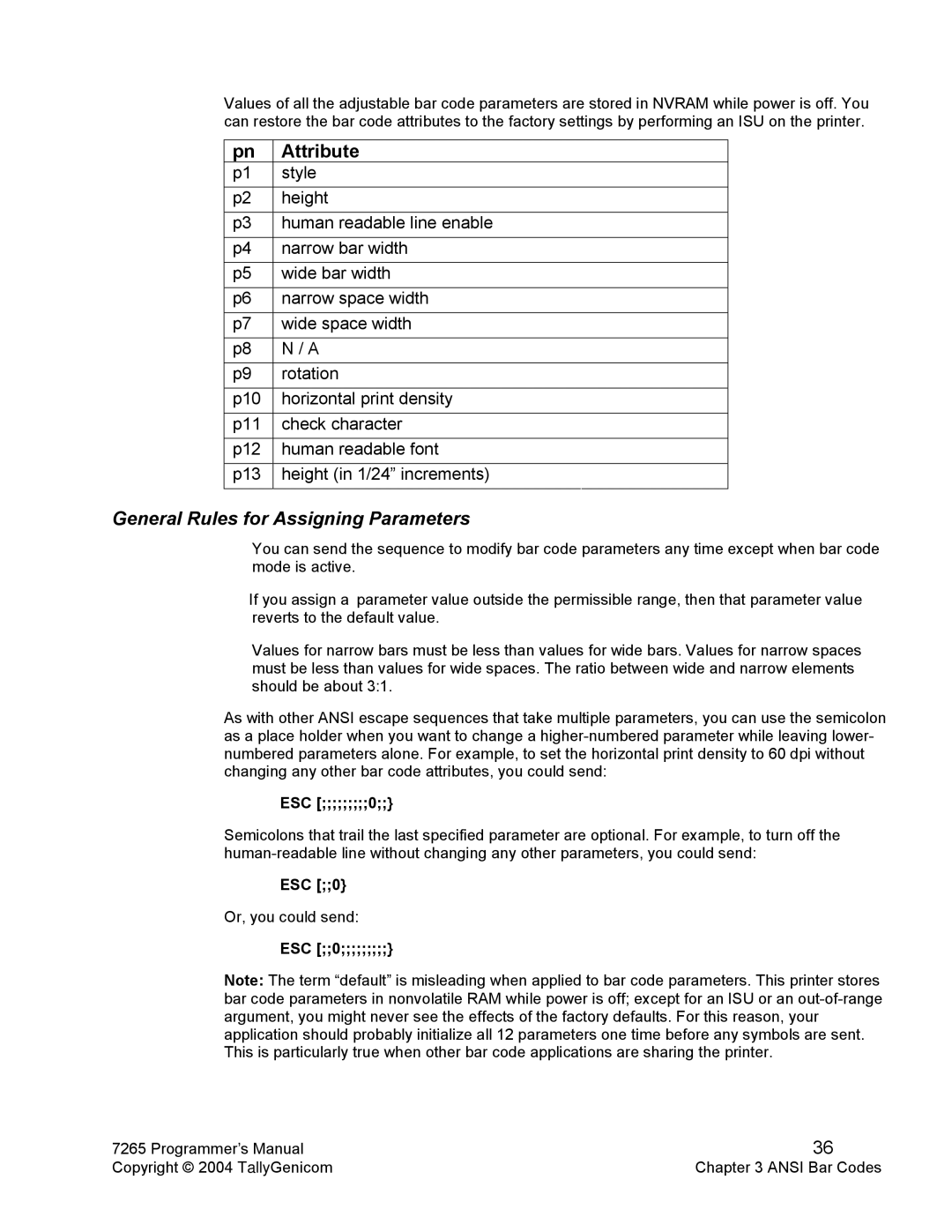
Values of all the adjustable bar code parameters are stored in NVRAM while power is off. You can restore the bar code attributes to the factory settings by performing an ISU on the printer.
pn | Attribute |
p1 | style |
p2 | height |
p3 | human readable line enable |
p4 | narrow bar width |
p5 | wide bar width |
p6 | narrow space width |
p7 | wide space width |
p8 | N / A |
p9 | rotation |
p10 | horizontal print density |
p11 | check character |
p12 | human readable font |
p13 | height (in 1/24” increments) |
General Rules for Assigning Parameters
You can send the sequence to modify bar code parameters any time except when bar code mode is active.
If you assign a parameter value outside the permissible range, then that parameter value reverts to the default value.
Values for narrow bars must be less than values for wide bars. Values for narrow spaces must be less than values for wide spaces. The ratio between wide and narrow elements should be about 3:1.
As with other ANSI escape sequences that take multiple parameters, you can use the semicolon as a place holder when you want to change a
ESC [;;;;;;;;;0;;}
Semicolons that trail the last specified parameter are optional. For example, to turn off the
ESC [;;0}
Or, you could send:
ESC [;;0;;;;;;;;;}
Note: The term “default” is misleading when applied to bar code parameters. This printer stores bar code parameters in nonvolatile RAM while power is off; except for an ISU or an
7265 Programmer’s Manual | 36 |
Copyright © 2004 TallyGenicom | Chapter 3 ANSI Bar Codes |
